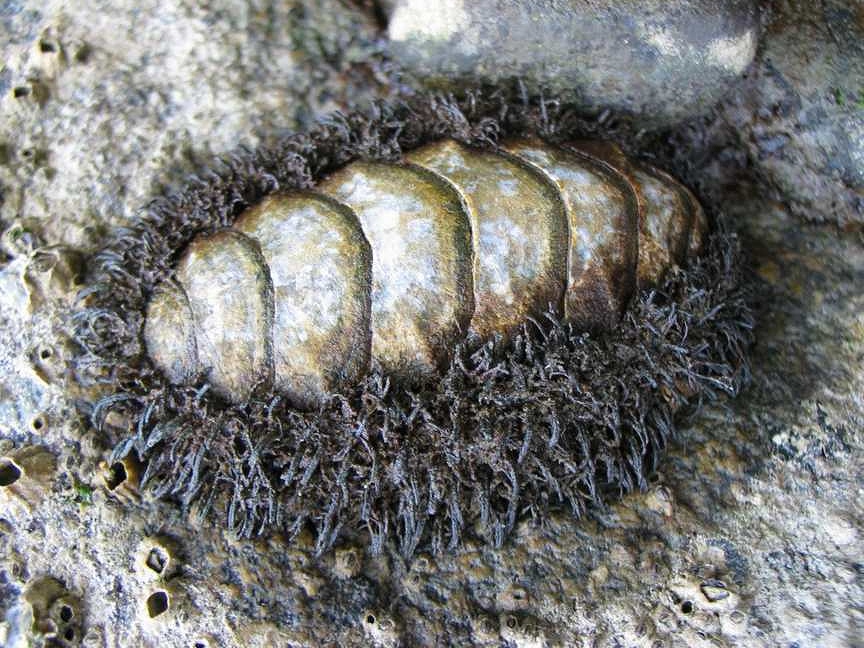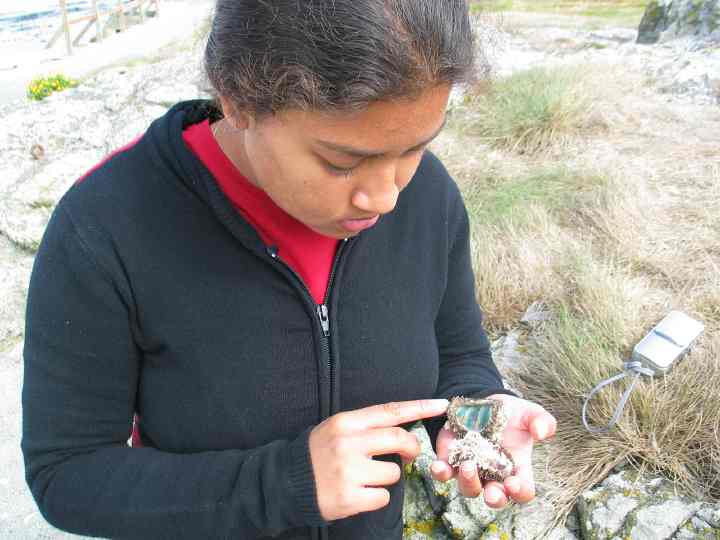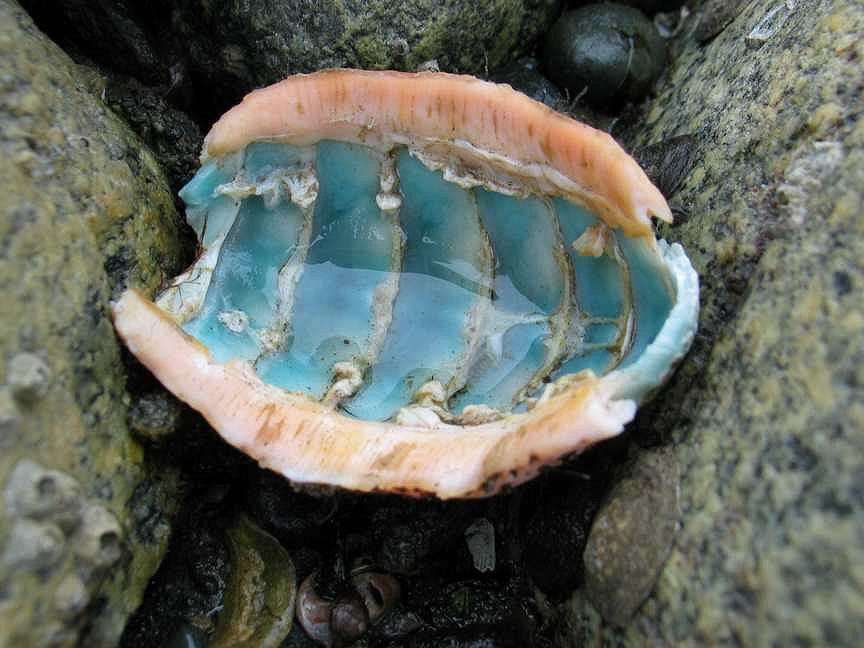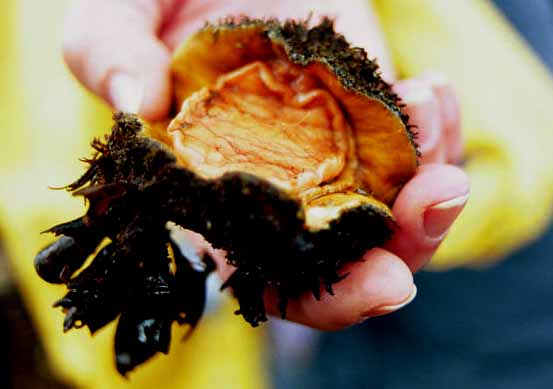Size: Can range between 5 cm to 9 cm in width.
Description: Oval shaped and low and dome shaped shell. It is covered by small interlacing plates which are covered by stiff mossy dark brown hairs. The inside of the shells are of a turquoise colour. Chitons have a broad flat foot” which it uses to move and to stick to its rocky homes.
Habitat: They are usually found on rocks and in tidepools located in the middle to low intertidal zones where they are protected from heavy wave action. They can be found from the Queen Charlotte Islands in British Columbia down to California.
- Raisa inspects a Mopalia shell
- A close up of the Mopalia shell. Note dried coralline algae attached on shell (photos by Garry Fletcher )
- This Mopalia, found in the intertidal zone, has had its soft underparts removed, revealing the turquoise shell plates. It was probably eaten by a Black Oystercatcher
- The foot and mantle on the ventral side. Also note algae attached as camouflage.
Diet: Red or Green algae
Activity: They can usually be found clinging to rocks. If they are somehow displaced from these, they roll into balls in order to protect their soft insides. Their foot can secrete small amounts of mucous which, along with muscular contractions, allows it to move. However, it prefers to move as little as possible and will only do so at night and when it is covered by water.
Predators: Mostly glaucous-winged gulls and black oystercatchers
Websites Consulted:
http://www.manandmollusc.net/advanced_introduction/moll101polyplacophora.html [Sep 22, 05]
http://faculty.northseattle.edu/ecauldwell/bio125/intertidal_lecture4.htm [Sep 22, 05]
http://66.102.7.104/search?q=cache:SUFBplz0MToJ:www.dohenystatebeach.org/pdffiles/tdplpack.pdf
+Mossy+Chiton+predators&hl=en [AccessedSep 22, 05]Other Members of the Class Aves at Race Rocks.
and Image File |
 The Race Rocks taxonomy is a collaborative venture originally started with the Biology and Environmental Systems students of Lester Pearson College UWC. It now also has contributions added by Faculty, Staff, Volunteers and Observers on the remote control webcams. Original by Raisa Mirza, 2004 The Race Rocks taxonomy is a collaborative venture originally started with the Biology and Environmental Systems students of Lester Pearson College UWC. It now also has contributions added by Faculty, Staff, Volunteers and Observers on the remote control webcams. Original by Raisa Mirza, 2004
|





